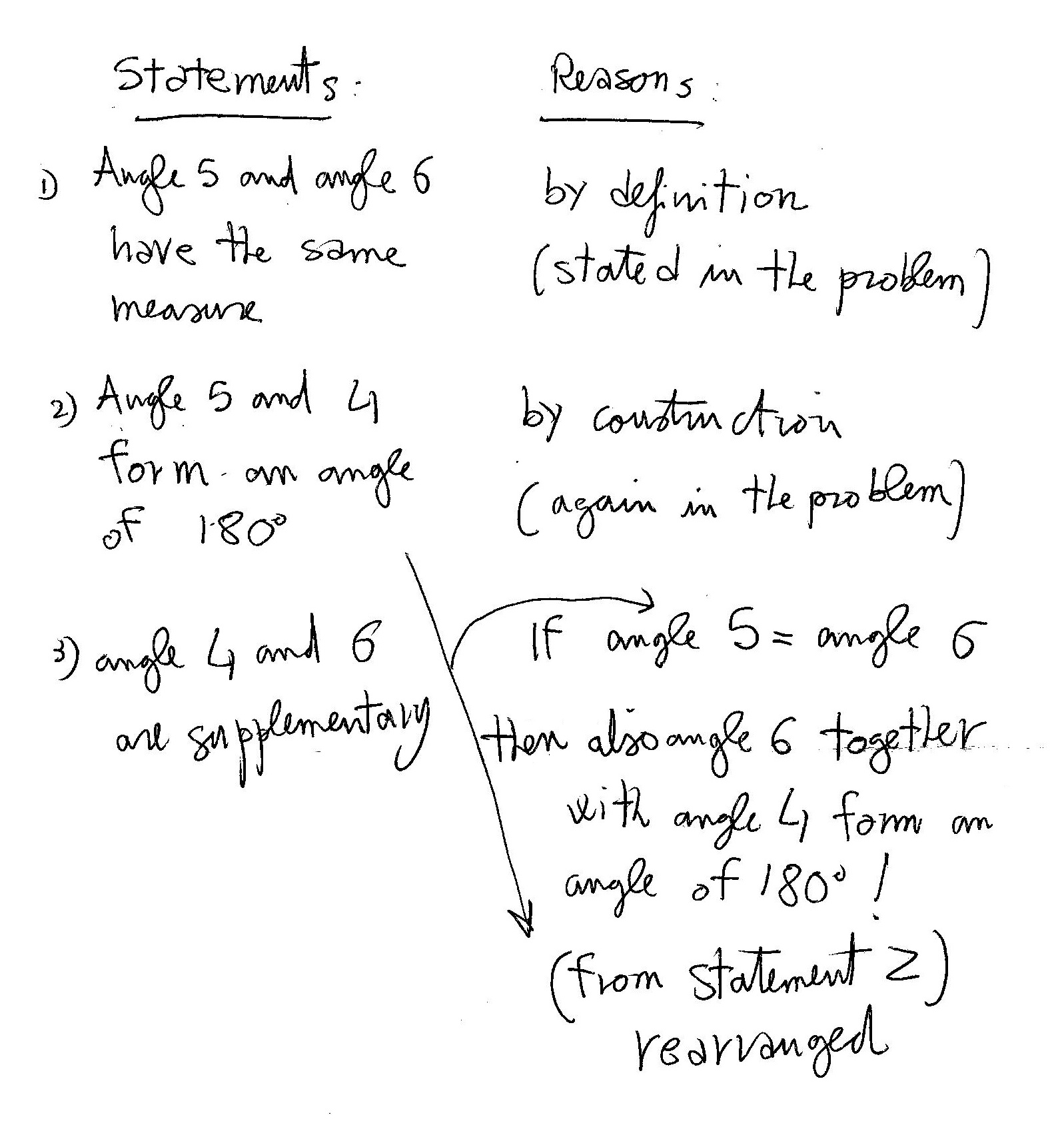Question #076ff
3 Answers
I tried this:
Explanation:
Ok...basically angle 5 and 6 are the same and adding angle 4 and 6 you shoulfd get
If you look at, say, angle 5, I would say that is
Let us call this something
angle 5=angle 6 =
as a consequence: angle 4 =
From the supplementary condition we want that:
angle 4 + angle 6 =
let us substitute our first guesses for the two angles (4 and 6):
rearranging:
which is true!
Does it make sense?
Given
and
from the figure it is evident that
So
PROVED
(Replacing
I tried this to include a Starement/Reason set up:
Explanation:
I came out with...this:



